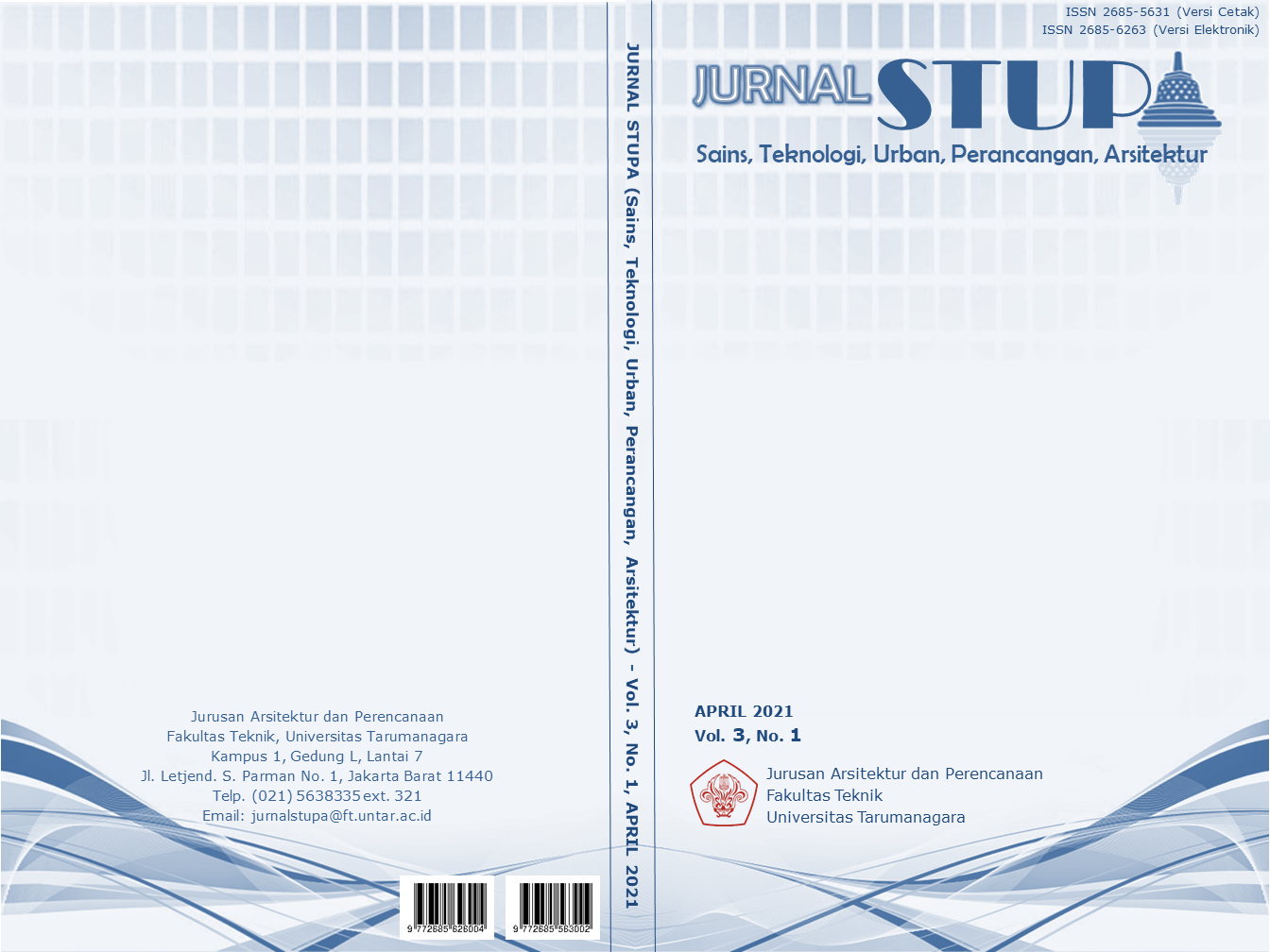PENERAPAN KONSEP BANGUNAN CERDAS PADA DESAIN HUNIAN PADAT DI KAPUK
Main Article Content
Abstract
The project is located in the Kapuk area, Cengkareng District, West Jakarta. This project was motivated by population density problems which created a land and energy crisis in this area. So, with that, this smart building project was created with the aim of forming a compact residential unit that can accommodate many residents and creating a smart building system that can make energy independently for residential needs. In designing this project a contextual method was used to position the building so that it was in harmony with the existing environmental conditions. Where the original site and environmental conditions will form the basis of the concept in building the project. The smart building design strategy uses the concept of compact units to maximize efficient land use. And in answering the energy crisis problem, a building with a smart building concept is needed, which is needed to ease the use of natural resources with self-recycled energy in the project. So that the project does not depend on energy from outside, but can create its own energy through recycling systems, such as water filtration systems, solar power systems, and biogas systems.
Keywords : Compact Residential Unit; Smart Building; Smart Energy System
Abstrak
Proyek berada di kawasan Kapuk, Kecamatan Cengkareng, Jakarta Barat. Proyek ini dilatarbelakangi oleh permasalahan kepadatan penduduk yang menciptakan krisis lahan dan energi di kawasan tersebut. Proyek bangunan cerdas ini bertujuan untuk membentuk sebuah hunian unit padat yang dapat menampung banyak penghuni dan menciptakan sistem bangunan cerdas yang dapat membuat energi mandiri untuk kebutuhan berhuni. Dalam merancang proyek ini metode kontekstual digunakan untuk memposisikan bangunan agar selaras dengan kondisi lingkungan yang sudah lebih dulu ada. Dimana kondisi asal tapak dan lingkungan akan menjadi dasar konsep dalam membangun proyek. Strategi desain bangunan cerdas menggunakan konsep unit padat untuk memaksimalkan penggunaan lahan hunian secara efisien. Dalam menjawab masalah krisis energi digunakan konsep bangunan cerdas untuk meringankan penggunaan sumber daya alam dengan energi daur ulang mandiri di dalam proyek. Sehingga bangunan tidak bergantung terhadap energi dari luar, melainkan dapat menciptakan energinya sendiri melalui sistem-sistem daur ulang, seperti sistem filtrasi air, sistem tenaga surya, dan sistem biogas.
Article Details
References
Casey, T. (2013). What Is A SmartBuilding?//www.triplepundit.com/2013//
Frick, H., & Mulyani, T. H. (2006). Arsitektur Ekologis. Yogyakarta: Penerbit Kanisius & Soegijapranata University Press.
Hardcastle, J.L. (2013). Why Smart Building Technology Is ‘NoBrainer’. http;//www.environtmentlleader.com/2013/11/08/why-smartbuildingtechnology-is-no-brainer.
Hes, D, & Plessis, C.D. (2014), Designing for Hopepathways to regenerative sustainability. Australia : Routledge.
Jormakka, K. (2003). Design Methods Birkh + Nuser Architecture. Berlin : Birkhäuser Architecture.
Nurcahyaningtiyas, A. W. (2014). Kajian Ekonomi Biogas Sebagai Sumber Alternatif. Yogyakarta : Universitas Atma Jaya Yogyakarta
Puslitbang Fisika Terapan (1998), Penjernihan air, Puslitbang Fisika Terapan, Bandung.
Rosadi, H. (2014). Saatnya Terapkan Smart Building Management System. INDOPOS.
Sutanto, A (2020). Peta Metode Desain. Jakarta : Universitas Tarumanagara
Turner, J. F. (1976). Housing by People. London: Marion Boyards.



